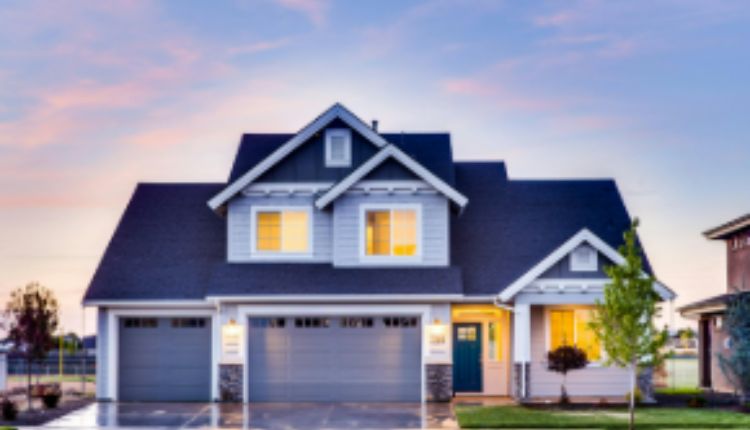Home additions aren’t just about gaining extra space anymore, they’re about enhancing lifestyle. Whether it’s a growing family, the desire for a dedicated home office, or an interest in multigenerational living, homeowners are seeking thoughtful, elevated ways to expand their living space. The modern approach to home additions isn’t about cookie-cutter extensions tacked onto the side of a house. It’s about integrating new structures seamlessly into the architectural identity of the home, while also increasing function and appeal.
This shift has redefined the remodeling landscape. Today’s homeowners expect more than just square footage, they want spaces that are beautifully designed, sustainable, and tailored to their unique lives. That’s especially true in renovations of high-value properties, where even a small expansion must reflect the home’s existing quality and character.
The Rise of Personalized Home Additions
A modern home addition is no longer limited to a sunroom or basic bedroom. Today, the conversation begins with lifestyle and ends with design. Homeowners are thinking deeply about how they use their spaces. They want additions that serve real needs, whether it’s a private guest suite for long-term visitors, an art studio that captures natural light, or a spa-like bathroom tucked into a new wing of the home.
This kind of expansion isn’t just about construction. It requires vision. That’s where design-build methods come into play. With architecture and construction under one roof, the process becomes more fluid and focused. There’s less friction between concept and execution, and homeowners are more likely to get exactly what they envisioned, down to the smallest finish.
And the result? Spaces that don’t just feel “new,” but feel like they’ve always belonged.
Integrating Function With Elegance
Before blueprints or permits, there’s an essential question: how can a new addition enhance the way you live? For many, the answer lies in multifunctional spaces, areas that bring comfort and style while solving practical needs.
Consider the growing interest in design additional living quarters. This might be an accessory dwelling unit (ADU) nestled in the backyard, or a fully independent guesthouse with its kitchenette, bathroom, and entry. These spaces can serve as short-term rentals, private in-law suites, or even long-term homes for adult children. But regardless of their use, they’re often designed with the same care and finishes as the main home, vaulted ceilings, radiant heat floors, custom cabinetry, and high-performance windows.
Luxury isn’t sacrificed for utility. If anything, function fuels inspiration. A well-designed addition can serve multiple purposes over time, changing as the homeowner’s life evolves.
Seamless Design That Feels Intentional
One of the most common fears homeowners have about additions is that the new space will look, well, new. Not in the fresh and exciting way, but in a way that feels tacked-on or disconnected. That’s why intentional design is key to successful expansions.
From the exterior, materials and proportions are chosen carefully so that the new structure complements the original home. That might mean mimicking rooflines, echoing trim details, or using aged brick or stone to preserve a timeless aesthetic. On the inside, designers focus on flow, how the addition connects with the existing floorplan, how natural light is used, and how flooring transitions from one space to another without jarring contrast.
This kind of cohesion doesn’t happen by accident. It’s the result of close collaboration between designers, builders, and homeowners, each working to ensure the new space feels like an organic part of the home, not an afterthought.
Lifestyle Upgrades That Last
An addition is a significant investment, and many homeowners want assurance that their choices will remain relevant and valuable, well into the future. That’s why flexibility is such a crucial part of the planning phase.
A space built for aging parents today might become a remote office or rental unit tomorrow. A new wing designed as a playroom for young children might eventually serve as a quiet reading lounge or hobby space. The best home additions are designed with the long game in mind, ready to evolve as needs change.
Incorporating high-end details, like smart climate control, wide doorways, or built-in storage, helps these spaces adapt more easily. But just as important is the emotional quality of the space: the sense of calm, joy, or possibility it inspires each time someone steps inside.
Elevating the Home’s Overall Value
When done well, a home addition doesn’t just improve everyday life, it boosts resale value significantly. Buyers are often drawn to homes that offer extra, well-appointed space without the hassle of future renovations. An expertly designed guest suite, a secondary kitchen, or even a luxurious indoor-outdoor room can set a property apart in a competitive market.
However, the value isn’t purely financial. There’s also the personal value of having a home that truly fits. Of waking up in a space that feels both expansive and intimate. Of hosting a family without sacrificing privacy. Of aging in place comfortably and stylishly. These are the deeper returns on investment that matter most.
A Fresh Chapter for the Modern Home
In the past, home additions were often a compromise, an after-the-fact solution to a space problem. But today, they represent a bold, creative opportunity to reimagine what home can be.
By embracing smart design, prioritizing seamless integration, and thinking about long-term use, homeowners can create additions that offer more than just extra room. They deliver more life, more beauty, and more possibility.
Whether you’re envisioning a private retreat, a fully functional guesthouse, or simply a better way to live in the space you already love, the modern addition isn’t just a structure. It’s a story of thoughtful transformation, one that’s waiting to unfold, square foot by square foot.






